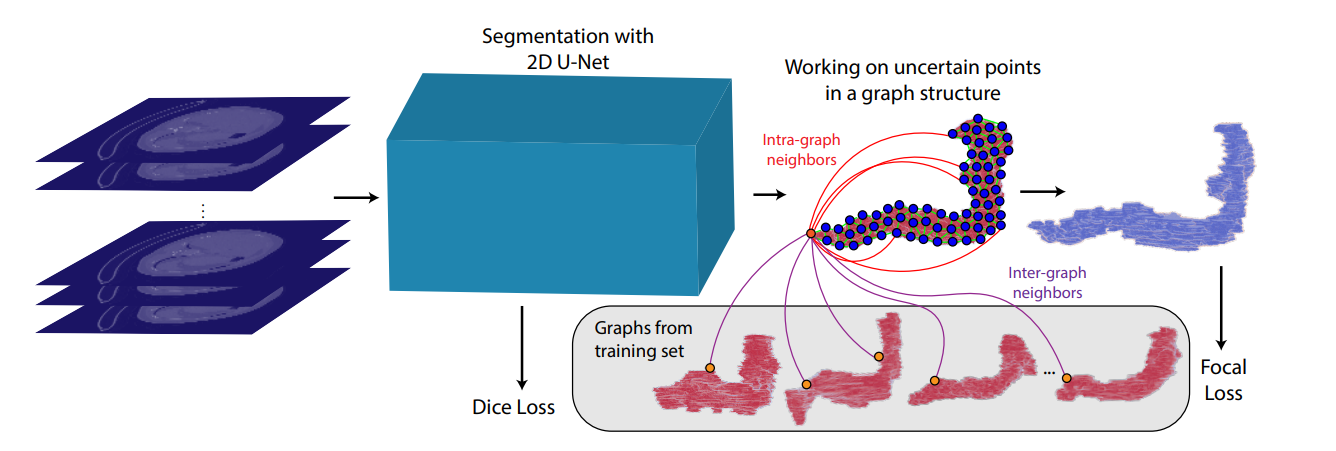Uncertainty-Based Dynamic Graph Neighborhoods For Medical Segmentation
In recent years, deep learning based methods have shown success in essential medical image analysis tasks such as segmentation. Post-processing and refining the results of segmentation is a common practice to decrease the misclassifications originating from the segmentation network. In addition to widely used methods like Conditional Random Fields (CRFs) which focus on the structure of the segmented volume/area, a graph-based recent approach makes use of certain and uncertain points in a graph and refines the segmentation according to a small graph convolutional network (GCN). However, there are two drawbacks of the approach: most of the edges in the graph are assigned randomly and the GCN is trained independently from the segmentation network. To address these issues, we define a new neighbor-selection mechanism according to feature distances and combine the two networks in the training procedure. According to the experimental results on pancreas segmentation from Computed Tomography (CT) images, we demonstrate improvement in the quantitative measures. Also, examining the dynamic neighbors created by our method, edges between semantically similar image parts are observed. The proposed method also shows qualitative enhancements in the segmentation maps, as demonstrated in the visual results.
PDF Abstract




 ALGAD
ALGAD